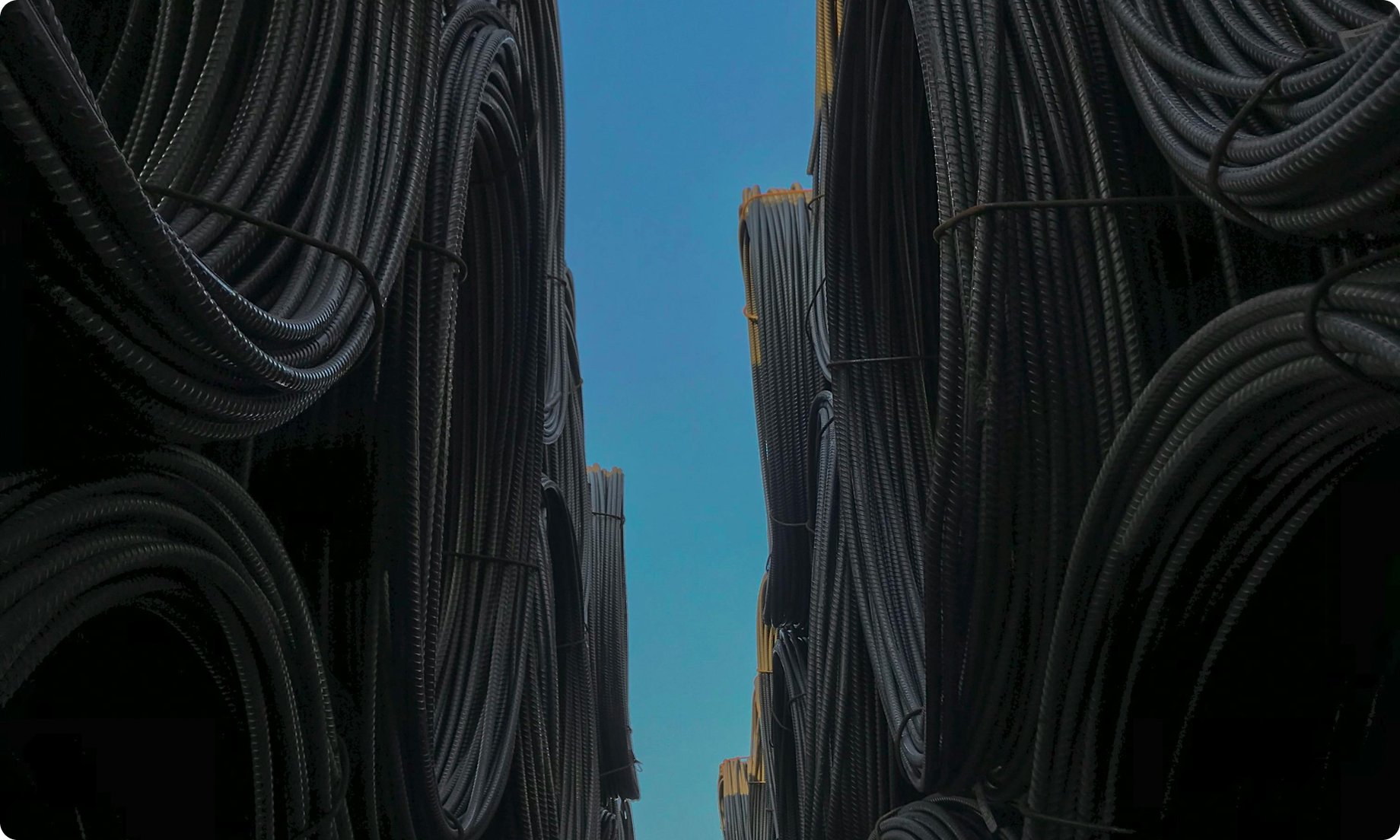Listen to the article

As the demand for environmental product declarations (EPDs) grows, especially for bids, green building credits, and procurement, manufacturers are under pressure to deliver large volumes of declarations quickly. But without quality assurance, this scaling can result in inconsistent, outdated, or non-compliant EPDs — undermining customer trust, leading to greenwashing accusations, and failing to publish reliable data that will help developers and AEC professionals make informed, carbon-minded material decisions.
Manufacturers looking to scale EPD production face two key challenges: ensuring consistent, high-quality data and efficiently managing large volumes of EPDs. One Click LCA’s internal verification for Project EPDs, system verification, and API integration provide a well-rounded solution, enabling fast, automated EPD generation while maintaining quality and credibility.
Scaling EPD production with internal verification
One Click LCA’s internal verification feature allows manufacturers to generate Project EPDs efficiently. These are non-published variations of existing, verified EPDs, designed for internal and external use without the need for third-party verification. This streamlined process allows manufacturers to quickly respond to customer requests for thousands of EPDs.
What is a Project EPD?
A Project EPD is a non-published variation of an existing, third-party verified EPD created for a specific project or contract. While it adheres to the ISO 14025 standard, it's internally verified by the manufacturer's qualified personnel or quality management processes, rather than a third-party. This distinction is clearly indicated on Project EPDs by the label “Internally Verified”.
Key characteristics of Project EPDs:
- Internally verified to ensure consistency without external program operator approval, saving time and resources.
- Linked to a verified EPD, carrying both EPD numbers, ensuring traceability and transparency.
- Clearly marked as “Internally Verified (ISO 14025)” to indicate its verification status.
- Flexible access, with the option to be public or private within One Click LCA’s database and Materials Compass.
- Shorter validity may be assigned by some program operators.
Internal verification: How credible is it?
Internal verification follows a rigorous protocol:
- Trained verifiers complete onboarding and pass an exam in cooperation with a program operator, demonstrating full understanding of ISO 14025, ISO 14071, and EN 15804 requirements.
- Full traceability is maintained between the Project EPD and its third-party verified base document.
- Verification status is transparently disclosed — no claims of third-party verification are made.
Internal verification refers only to the review and validation process — the underlying LCA model, dataset, and assumptions remain consistent with the third-party verified EPD. No unverified models are introduced. This approach is aligned with ISO 14025 Section 7.2, which allows for internal critical review of Type III environmental declarations when conducted in line with ISO 14071.
To use the internal verification feature, LCA practitioners must complete One Click LCA’s EPD onboarding, pass the internal verifier exam to demonstrate competence with applicable standards, and receive organization-level approval from One Click LCA, after which they can submit Project EPDs directly through the platform for rapid internal verification.
Use cases for internally verified Project EPDs
Internally verified EPDs are not a substitute for third-party verified EPDs in regulatory or certification contexts that explicitly require external verification. However, they are highly valuable in the following contexts:
- Responding to large-volume customer requests: When clients request EPDs for every variant or batch of a product.
- Bid and tender documentation: Where indicative or customized carbon footprint disclosures are needed promptly.
- Pre-certification engagement: For early-phase material selection or carbon benchmarking before final product selection.
- Client-specific transparency: Tailoring declarations for specific markets, applications, or geographies.
- Internal product development: Evaluating carbon reduction strategies or scenario modeling.
Internally verified Project EPDs should not be used in certification schemes, regulatory filings, or green public procurement processes that require third-party verified EPDs, unless explicitly permitted. Manufacturers are responsible for determining acceptability in their target markets.
Schneider Electric partnered with One Click LCA to publish Projects EPDs covering +50.000 of their MEP products.
Transparency and terminology: Are they ‘EPDs’?
Can internally verified declarations be called “EPDs”?
Yes. ISO 14025 defines a Type III environmental declaration as one that follows ISO 14040/44 and is subject to critical review — this may be internal or external. Internally verified EPDs are EPDs, provided they are clearly labeled and do not misrepresent their verification status. These types of EPDs:
- Are traceable to a verified EPD
- Are labeled as “Internally Verified”
- Do not use logos or formatting associated with third-party program operators unless explicitly authorized
Can you trust the data?
The same data quality requirements apply to internally verified EPDs as to third-party verified ones. The internal review process follows ISO 14044, and can be supported by ISO 14071, which provides detailed guidance on reviewer competence, independence, and documented procedures to ensure a credible critical review.
By enabling internal verification, manufacturers can efficiently scale EPD production, speeding up decision-making and increasing transparency across their supply chain. This increased transparency is particularly valuable in product categories with significant data gaps — such as mechanical, electrical, and plumbing (MEP) systems — where published EPDs are limited or fragmented. Project EPDs also support better collaboration with stakeholders and more informed material selection decisions early in project planning.
One Click LCA ensures that internally verified EPDs are clearly distinguished through:
- Mandatory “Internally Verified (ISO 14025)” labeling
- Connection to the verified EPD
- Distinct formatting separate from third-party program operators
- Optional visibility settings (public/private) in Materials Compass
Materials Compass: Manufacturer EPDs can be featured in the world's largest construction LCA database with over 300,000 materials, where buyers and specifiers can find them.
Scaling further: Automated EPD generation via API and system verification
For manufacturers producing EPDs at scale, One Click LCA's API integration offers an even greater efficiency boost. With automated data import, quick data processing, and direct sharing, manufacturers can generate and distribute EPDs with ease.
Key benefits of the API integration:
- Automation: Import your bill of materials seamlessly from ERM systems or BOM spreadsheets, reducing manual data entry.
- Scalability: Generate EPDs for thousands of product variants.
- Speed: Create Project EPDs instantly, accelerating sales and project planning.
- Accuracy: Eliminate the risk of human errors by automating data input directly from internal systems.
- Seamless data integration: Export EPDs as digital files, Excel, or PDFs and integrate them back into enterprise systems.
- Effortless sharing: Distribute EPD data to customers via One Click LCA’s database.
With One Click LCA’s API integration, manufacturers can enable non-experts, such as sales and marketing teams, to generate EPDs, further embedding sustainability into business operations. This empowers sales and marketing teams to readily provide Project EPDs to clients, strengthening customer relationships and enhancing the company's sustainability image.
System verification: Minimizing the risk of human error
System verification supports the scalable generation of EPDs by auditing and validating the manufacturer’s data handling processes, software systems, and quality controls used to generate EPDs. The process begins with the manufacturer providing documented evidence of data governance, including ISO 9001 or ISO 14001 certification and clear documentation of data input and transfer systems (e.g., BOM handling, API configurations). Specific parameters — such as material compositions, data transfer routines, and environmental impact categories — must be consistently applied or changes explicitly tracked.
During the initial verification, a manual review is conducted to assess whether the manufacturer’s internal procedures minimize risks such as inconsistent inputs, manual entry errors, or untraceable data changes. The audit covers aspects like source data integrity, repeatability of results, and adherence with declared functional units and system boundaries. Verified systems are subject to maintenance audits annually and must undergo re-verification if significant changes are made to the data infrastructure or modeling procedures.
By confirming that the same input logic, dataset structure, and control protocols are used across all generated EPDs, system verification helps ensure that internally verified declarations maintain fidelity to the originally third-party verified base EPD. This reduces verification workload per document while upholding technical credibility and traceability in accordance with ISO 14025 Section 7.2 and ISO 14071.
Enabling industry-wide transparency
By combining internal verification and system verification for Project EPDs with API-powered automation, manufacturers can scale EPD production while ensuring data integrity. These tools help businesses meet growing market demands, improve environmental reporting, and drive carbon transparency across the built environment. This proactive approach not only meets current market demands but also positions manufacturers as leaders in sustainable construction practices.
For manufacturers looking to streamline their EPD process and stay ahead in sustainability reporting, One Click LCA’s solutions provide the speed, accuracy, and scalability needed to lead the industry.
EPD tools for scaled EPD production: The EPD Generator helps manufacturers create EPDs at scale for their products.
How One Click LCA can help you scale EPD production
One Click LCA's EPD Generator tool offers an end-to-end solution for manufacturers who need to create EPDs compliant with global ISO and EN standards. With this tool, users can upload large volumes of data automatically via One Click LCA’s API integration, perform unlimited LCAs and generate EPDs for any product category.
Carbon Experts Newsletter
Industry news & insights — straight to your inbox
Want to learn more?
Hetal Udas • Mar 06 2024
Melina Zacharia • Feb 05 2024
Melina Zacharia • Sep 11 2024
